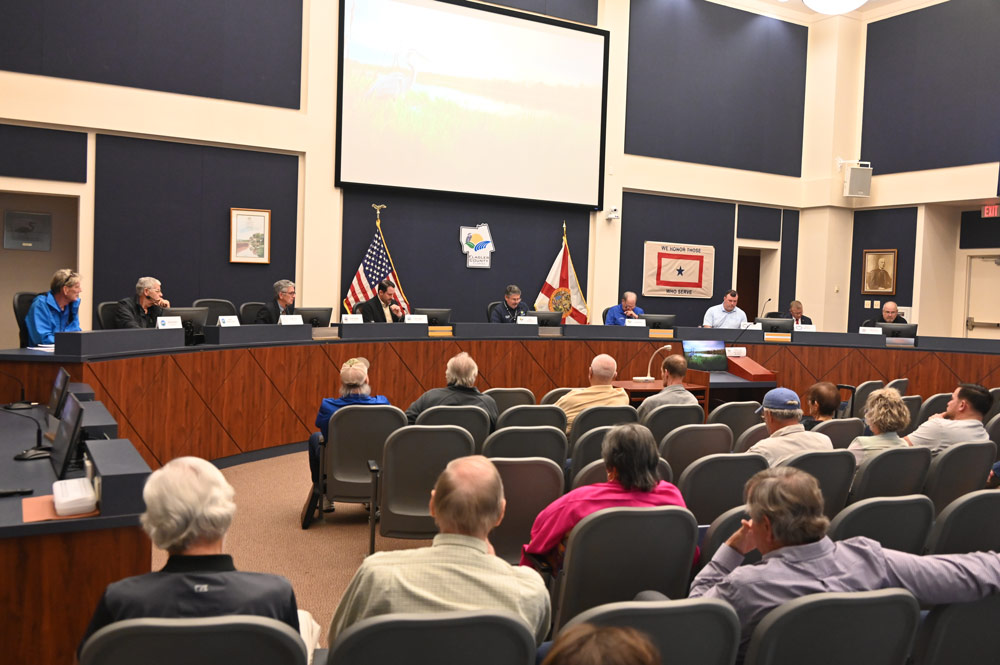
In Sum: In contrast with their joint meeting in February, representatives from Palm Coast, Beverly Beach, Bunnell, Flagler Beach, Marineland and the county were all more supportive of a proposed beach-management plan centered on raising the sales tax as they discussed it in their latest joint session Wednesday evening. Palm Coast remains the crucial hold-out for now, if not an immovable one. But time is running out.
![]()
Almost an hour into last night’s joint meeting of local governments to discuss an ambitious but contentious county plan to rebuild and protect Flagler County’s beaches, a resident from Beverly Beach called Ellen addressed the elected official from the floor, after her own town government had dubiously denied her the right at a recent workshop.
Ellen made a simple point the more-than one-third of Flagler County residents who are over 55 like her can relate to: when it comes to taxes, “some receive more benefit. Some receive less, but we’re all obligated to pay an equal amount,” she said. She gave familiar examples. She pays taxes for schools even though she has no children in school. She pays taxes for police protection even though crime is nearly non-existent in Beverly Beach. She doesn’t play pickleball and Kindle is her library, but she pays taxes that fund libraries and rec centers. Plus she’s a snowbird. She’s not here six months of the year.
“As you can see from these examples, in my opinion, it would be ridiculous to think that we can figure out a solution to the beach renourishment by trying to be fair,” Ellen said. “Instead, we need to–hate to use this term–we need to grow some balls, and we need to accept the fact that it needs to be done. We all need to step up and do our part.” Her tax prescription was a bit more Scandinavian than even the county is proposing, but she’d made her point.
By then the government representatives from Palm Coast, Beverly Beach, Bunnell, Flagler Beach, Marineland and the county had all spoken their piece on the plan, all of them this time in less abrasive, more accepting and pragmatic terms. Even Palm Coast and Beverly Beach. When this panel met in February to first discuss a much vaguer plan, Palm Coast and Beverly Beach sounded like Savonarolas condemning an abominable vice. This time they sounded more like Rockefeller Republicans rediscovering their inner pragmatist.
“I think I have receptive partners that are willing to continue to work and listen,” County Commission Chair Dance, who also chaired Wednesday’s meeting, said at its tail end.
The plan, crafted by County Administrator Heidi Petito and Deputy Administrator Jorge Salinas, depends on raising the sales tax by half a percent, granting Palm Coast and Bunnell half their share of that revenue (for Palm Coast, that’s $2.7 million in new revenue in the first year) in exchange for their support, but taking the full revenue from barrier island towns, plus the county’s full share, to direct it to beach management. Barrier island property owners would also pay a $160 annual fee per parcel. That figure is not set in stone, and the county is working on a grant program for those who can’t afford that much. The county would also appropriate a fraction of property tax revenue to the effort, plus a chunk of revenue from the tourist tax, which is paid overwhelmingly by visitors. That’s the plan in the main. It would put the county in charge of all 18 miles of beaches, both to rebuild them, maintain them, and prepare for future renourishments, which will be needed every six years.
The official line in Palm Coast is that its council still wants the sales tax portion put out for referendum. But County Commission Chair Andy Dance wanted to make this clear: the county is not asking the cities, including Palm Coast, to vote for a sales tax increase. Only the county would vote for that increase. “The county commissioners are taking the political hit,” he said. The county is asking the cities only to support the funding formula–the split of the revenue. A referendum would enable the money to be bonded. “But this is a pay-as-you-go plan,” Dance said, making the referendum unnecessary. (He did not say that the referendum would likely fail, if held.) “If we implement this plan this year, we start building those monies to be able to construct the next phase and then turn around and pay for their renourishments,” Dance said.
Obviously, the county and the cities would work together with individual joint agreements spelling out exactly how the revenue would be used and distributed. Norris, for example, wanted the certainty that Palm Coast would be able to spend its share of the revenue ($2.7 million in the first year) how it sees fit. That’s in fact the case: the county has no authority over Palm Coast’s share.
Going into yesterday’s meeting it was clear that the county and Flagler Beach were fully behind the plan, as was Marineland (a more symbolic than relevant vote). Beverly Beach Mayor Steve Emmett had spoken harshly against it, as had, to a lesser extent, Palm Coast Mayor Mike Norris. The county could ignore Beverly Beach. It could not ignore Palm Coast. The entire plan hinges on that city’s support.
So all eyes were on Norris, who came into yesterday’s meeting looking despondent from the controversy swirling around him since Tuesday. (See: “Palm Coast Council Agrees to Investigation of Mayor Norris After Allegation of ‘Blatant Violations of City Charter’.”) Yet Norris spoke with more fortitude than bitterness, or opposition. He now sounded the most amenable to the Petito plan but for his colleagues: “Three of the council members want this measure to go on a referendum, and I don’t necessarily accept that philosophy. I can be negotiated with,” Norris said. “But right now, I can’t do anything with this. I want to help the county out, and I know it’s an important measure. But when three council members wanted to go on a referendum, there’s not much I can do. There’s only four of us. Three of us were elected. So that’s their call, unless you can convince them otherwise. I’m only one vote on the council. But I would like to say that I think Palm Coast would be pulling more than their fair share on this.”
Palm Coast City Council member Ty Miller was sitting next to him. Miller since his election in November has emerged as the council’s most pragmatic voice, though he has yet to use it persuasively with his colleagues. He states his positions and stops, rather than attempt to build consensus for them. It’s not unusual among new officials ascending learning curves.
Miller said the city is facing funding challenges, namely a bill in the hundreds of millions of dollars for utility improvements, partly paid for with a sharp utility rate increase. But he wasn’t closed to the proposal. “It’s difficult to convince them to pay for a beach that’s not within the city limits,” he said of Palm Coast residents (though Palm Coast residents are by far the primary users of the beach, exceeding Flagler Beach and out-of-county visitors, according to tourism-bureau data based on cellphone locations). “I am open to this funding mechanism, and I appreciate the complexity of it, the thought that has gone into it, the need for buy-in from multiple partners. This is certainly not an easy undertaking. So I think that we can be willing to bring it back to council again. I think we face some headwinds there, and we still have more work to do in that regard.”
The council is also about to appoint a new member to replace one who resigned for health reasons at the end of February. But Miller was also well aware: “The benefit of keeping 50 percent of that can go a long way to multiple projects,” he said. “I don’t want you to think that I don’t acknowledge that there’s many benefits for us as well, away from strictly the beach, because that’s also a benefit.” Recognizing Palm Coast residents’ use of the beach, he cited his own experience as an example, having been a frequent visitor to the beach, and having lived in Flagler Beach for a period. “From a personal standpoint,” he added, “I believe it to be an important project that is necessary, again. Just want to reiterate that the challenges we face in terms of the headwinds of trying to get this through.”
In other words, Miller is persuadable, if not yet persuading others.
Emmett this time had come around, too. He doesn’t see his constituents have “a rhubarb over the half cent,” but he’s worried about the $160 fee. “Everything’s 5050, we’re still moving along in the right direction,” he said, the February shrillness gone. “I believe, okay, that we’re working for our communities and my community. We will sit down with the county and reference to somewhat of what you just talked about.” He even conceded: “Maybe we will have to stand up to the plate and pay out some money townwise.”
Bunnell City Commissioner Pete Young was the lone representative from his city. “I’m not speaking for the whole board commissioners, but we’re all both, all five of us, commissioners, mayor, is open minded to this idea,” Young said. “I was happy to come and talk and try to answer some questions that were answered to me or asked of me.” But the intention of Wednesday’s meeting was to hear the consensus of each local government. The Bunnell commission got the same presentation all other governments got from Petito. It simply did not discuss it and reach agreement ahead of time, as the county hoped, though in fairness two new commissioners were just elected, and don’t get seated until April. Still, Young was more explicitly supportive in his closing comments.
Flagler Beach Commission Chair Scott Spradley and fellow Commissioner Eric Cooley spoke their full support, which has been previously reported (see “Flagler Beach ‘All In’ Behind Sales Tax Increase to Fund Beach Management, But Overcoming Palm Coast Veto Is Key“) as did Marineland Commissioner Dewey Dew.
There were questions about why the county didn’t just rely on its tourism tax revenue to shoulder the costs. County Commissioner Greg Hansen said other counties do that because “they get more in the first month of the of the year than we get entire year for TDC.” He’s right in most regards. Flagler County collected $4.4 million in tourist tax in 2024. Volusia generated $33 million, St. Johns $22 million, Broward $102 million, Miami-Dade $144 million, Duval $47 million, Palm Beach $86 million. Same story on the Gulf of Mexico, where Pinellas generated nearly $100 million, Sarasota $26 million, Lee $33 million, Escambia $18 million. A few, smaller coastal counties generated less than Flagler. (See the list here.)
“That’s just a fact of life. We don’t have that big a pot of money in the TDC,” Hansen said. “We’re going to try to take three pennies from them for a few years so that our TDC contributes more to the [beach] but the majority of the counties just pay with TDC money.” Hansen meant to say two pennies, not three: of the 5 percent tourist surtax, the money generated by 1 percent goes to beach management currently. Another 1 percent goes to capital projects that improve the county’s tourism profile. Recent grant awards include Southern Recreation Center in Palm Coast, the Flagler Beach boardwalk, which will get a major reconstruction, and the Flagler Auditorium/Fitzgerald Performing Arts Center in Palm Coast. That’s the percent Hansen and the rest of the county commission will be shifted to beach management for three years. The other 3 percent’s revenue is spent on promoting the county.
Other residents who addressed the panel, among them R.J. Santore of Flagler Beach, Gene Adams of Beverly Beach, Jim Ulsamer of the Hammock and others were supportive of the county plan for its even-handedness. Adams urged Palm Coast officials to reconsider their resistance. “You’re the driver of the economy,” he told Palm Coast in one of the more marketable metaphors of the evening. “The beach is the fuel that helps drive the economy.”
Ulsamer commended the “statesmanship” he was witnessing on the panel and the quality of the Petito plan–not empty words from Ulsamer, whose many years in the county and many candid addresses before the County Commission (he has chaired the local library board for years) have made him gunshy of unearned compliments. “We cannot delay,” he said. “A referendum is a non-starter, and I think everybody knows that it would push things off.”
And some, like Raymond Royer, a barrier island resident, spoke in opposition and derision, calling the plan futile without bulkheads and sea walls, and ridiculing the officials: “Your head is in the sand and it’s sickening,” he said, an outdated metaphor considering what’s precipitating the urgency of the plan: a dearth of sand. (Sea walls are an option. Two have been built along the Flagler shore, another is under construction. But the beaches in front of those walls will eventually be lost.)
But Royer was in the minority. The meeting’s tone by its conclusion 90 minutes in was noticeably upbeat in comparison with its February edition. “The progress that’s been made in the dissemination and commenting on the information from the last meeting to this one has been remarkable,” Spradley said. “So I appreciate all the county’s efforts in trying to educate all of us and creating this forum for discussion.”
Time, however, is running out. The County Commission wants to vote on a sales tax increase in spring, so it can go in effect in 2027 and revenue can start accumulating while a segment of beach north of the pier is rebuilt. Uncertainty and empty or revolving seats in Bunnell and Palm Coast complicate the timeline.
![]()






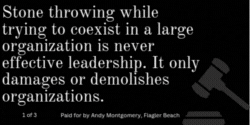







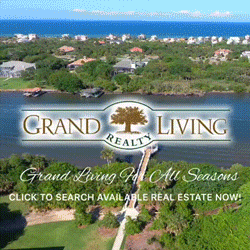
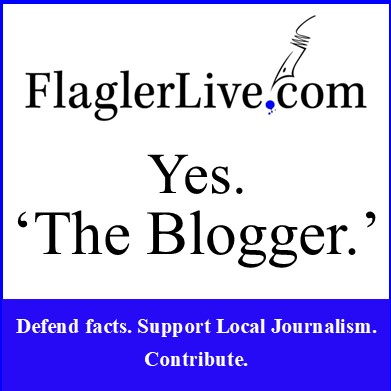



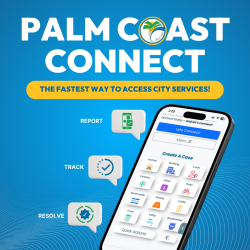

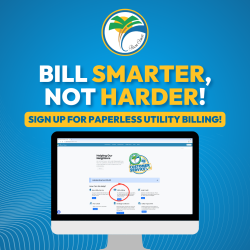

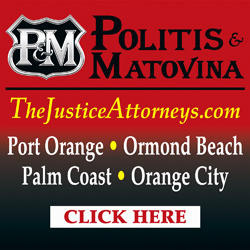




Miles says
The 1/2 penny at 7.5% is a fully 1/2 penny tax because a merchant can’t collect 1/2 penny. So it will be $1.08 for something now as opposed to $1.07.
Just say no!
James says
I don’t know about anyone else here, but this article speaks volumes to me.
The second(?) waste water plant has to come in under $200 million… that should buy enough capacity to cover (minimal) future growth. That is, with a few additional millions in overhauls to the existing waste water plant and existing associated infrastructure… probably another $50 million.
At most this should come in around $250 to $300 million, which is the original estimate for the project… no? And even that seems kinda high, but eh, right?
So where did the $614 million figure come from?
That’s more than the combined “TDC” of all the counties named above… to put it quickly into perspective. Whatever that “TDC” is? Some kind of state matching fund? Don’t care, just using it to bring home a point.
But clearly it seems the dis-function (of the decades long revolving door) of Palm Coast government has the potential to bring down the entire county… which has its own set of long term problems apparently.
And yet another city council seat up for “appointment,” not by vote. Not that it would matter, as one resident (of another, sister city/town) mentioned, many here are part-time residents… they’re not completely aware of the situation unfortunately. Perhaps another historical problem that’s difficult to remedy.
Just an opinion.
celia pugliese says
To start with everyone has to be reminded while referring to Palm Coast that we are the largest contributor to the county ad valorem tax, as Palm Coast pays 45 cents of every dollar to the county, when city only receives about 23 cents of every dollar if no less and Palm Coast pays additional almost 9 millions for the “additional sheriff service in the largest city in the county” that is a reason of why our roads a crumbling. Meanwhile the county other than asking to Tallahassee for roads funding asks instead for FAA for FDOT grants for over 69 millions since 2019 for an airport expansion to host its dangerous, nuisance training pilot fields over us all. An at a KFIN airport were we can’t buy a tkt to fly nowhere and that render in the red by one and two and millions a year in 2022 and 2023 annual reports. Also if Palmcoasters as reported, not this family, in greater numbers use the FB beach sand is because thou Palm Coast is the largest city in Flagler County, sadly does not offer its own life guarded beach for its families with kids and forced to drive ten miles to FBs. Furthermore when in 2024 our Vice Mayor Pontieri suggested the county to deed us one of it ocean front remainingn parks to manage for us and probably including a life guard for Palmcoasters, the county and its Hammock residents hollered their NO opposition! This after the county in the late 90’s right before PC incorporated deeded several blocks (33 acres as I recall was) of our inherited ITT ocean front public parks, in exchange for several hundred acres in the bundocs so Bobby Ginn could install is Hammcok Beach Golf Course etc. into what now amounts to practically a private beach were Palmcoasters can’t access unless walking big distances. Maybe all of the above can make it clear why Palmcoasters oppose any more 1/2 cent tax. Or maybe is time that if they want us to contribute this time “deed “the Jungle Hut park beach front or any that our Vice Mayor Pontieri fits good enough to serve Palmcoasters other than driving 10 miles to FB were sometimes we feel not really welcomed…
Endless dark money says
Haha save the beach, the treasonous leaders have cancelled noaa, the national weather service, all research funding, fema and on and on. Y’all won’t even see the next storm coming haha! Just another way the rcons can steal your money.
Larry says
Hoping the Palm Coast board approves the 1/2 cent beach sales tax. Since it’s a sales tax, it won’t only be Palm Coast residents paying that 1/2 cent extra. It will also be paid by people that don’t live in Palm Coast or Flagler County.
Lots of visitors come to Palm Coast to shop and eat at restaurants and to stay in hotels. That 1/2 cent tax will also be paid by those folks, some that don’t live in the area but spend money here because they are in town due to vacation, visiting family, passing through or traveling for work. All will contribute the 1/2 cent toward beaches when they buy things.
Think of all the money the Bike Week visitors spent recently. An extra 1/2 cent beach tax from those visitors twice per year could be used toward beach renewal plus half of it toward other Palm Coast and Bunnell city projects. The biker visitors enjoy cruising next to the scenic beach and taking photos of the beach. So they do get some use out of the beach, and would be contributing a small amount as well. A lot less shocking to get beach money from visitors this way, versus the $20 parking fee that Volusia recently added.
Laurel says
“Barrier island property owners would also pay a $160 annual fee per parcel.”
“…also…”
I never got a reply from anyone when I commented on what is a “parcel”? Is it a unit of measurement? Does the “parcel” at Hammock Dunes resort, restaurant and golf course, a profit making business directly on the ocean, equal to a small “parcel” with a trailer on it, with only beach access by public parks? $160 per each “parcel” regardless of use, size and location? Regardless whether it is in a private subdivision, with private beach access, or not? Whether it is a tourist lodging destination or not?
If that is how the county wants to tax parcel owners, then some parcel owners are more equal than other parcel owners. Apples and milk for them.
Someone was paid to think that up?
Also, just out of curiosity, are the barrier island people exempt from the half cent sales tax increase, so as to not double tax us for the same issue? If not, what percentage of that tax increase goes to barrier island residents? If not, does our half cent sales tax partially go to Palm Coast and Bunnell, but not the barrier island? After all, the cars backed up trying to cross the bridge are heading east, not west. The west direction is always open.
Sorry, but this is the wackiest assessment/taxation I’ve ever come across. This thinking is so compartmentalized, and illogical as hell. The fair way to do this is to is to assess by common parcel size (average home lot), square footage of commercial buildings and/or lot size, and by usage, and ocean front homes/buildings, done across the county, followed by grants. This divides the funding up equally, hurts no one, an unifies people instead of dividing them. As it is now, location of the barrier island is considered, but some barrier island locations are benefiting way more than other barrier island locations.
Maybe y’all should slow down a bit, and think this out a whole lot better than it is. Until then, you will have resistance, and you’ll deserve it.
Good money after bad says
Why not collect the money and have a big party where everyone just throws sand into the water ? How many times do we do the same thing with the same results?
JUST SAY NOOOO WAY !
Only an idiot keeps doing the same thing over and over expecting different results
James says
I would also add that a moratorium on new construction is reasonable. Since it would allow the construction of the new waste water plant to commence, without over burdening the older one.
The city can then transition to the new waste water plant while repairing/upgrading the older one.
Not a mind reader, so I don’t know if this is what Norris intended when he called for a building moratorium. But I can certainly understand his outrage at a $614 million price tag… if that also was part of his request for resignations.
Just say’n.
Stephen says
614 million for a waste water plant sounds crazy expensive. What are other options? Palm Coast already gets enough of my money!
JimboXYZ says
It’s basically the property that is bought & sold in real estate transactions. sometimes the internet can be used to learn definitions. To me it’s synonymous with the term “property”.
https://www.listwithelizabeth.com/parcel-in-real-estate/
timeto move says
No more, Time to move.
JLaRue says
Would the referendum make the sales tax be alotted for the beach renourishment only? No splitting the monies? All 1/2 cent sales tax is used for beach renourishment. There is a future plan with funding in place. A surplus. I know a plan ahead mind set is a new concept around here, but wouldn’t that be better? The sell here is to split with the cities. The sell should be to save the the beach.
Living on the barrier island, I don’t understand the open ended start of the $160.00 fee. This can go up as needed for the “ pay as we go” plan. This is like giving a blank check to be increase as needed. Why would I want to do that when half of the sales tax money is being given to the cities?
Greg says
Big money always protects big money. That’s the idea of the all lots pay $160 a year in FB. Million dollar home owners pay the same as a much cheaper home owner pays. Typical, big money makes the rules to always protect themselves. Welcome to America.
Shame on you! says
This business as usual, tax and spend plan is unsustainable. People moved here because it was affordable, but that’s no longer the case. Raising taxes at your every whim isn’t the answer. Obviously, there isn’t enough money to provide for everyone’s wishlist. Not only are the elderly feeling the pinch, young people with families are too. They are leaving. Where are the high paying jobs that would attract and retain the younger generation in order to afford to live here? That’s what’s missing. The powers that be have painted us into a corner. They keep throwing ideas at the wall and hoping one will stick. Good luck with that!